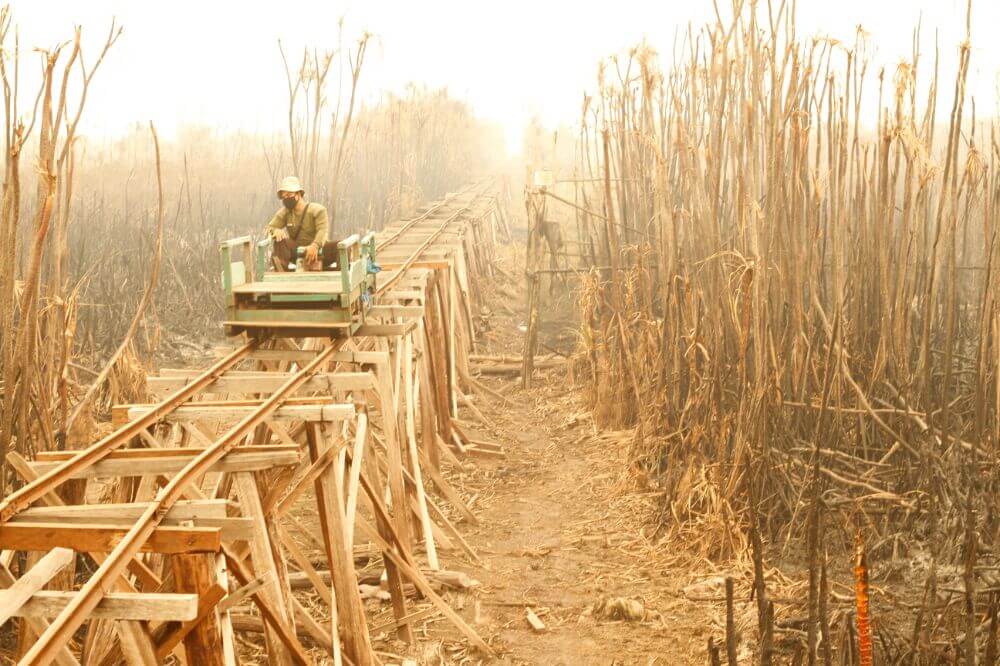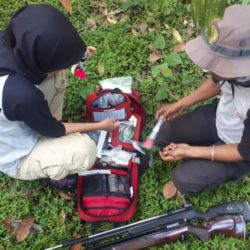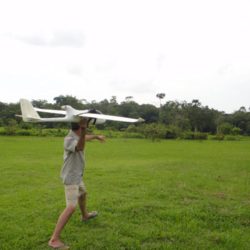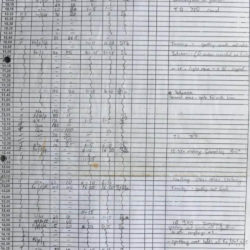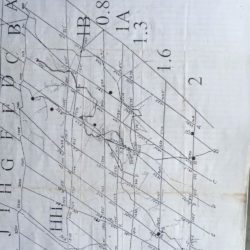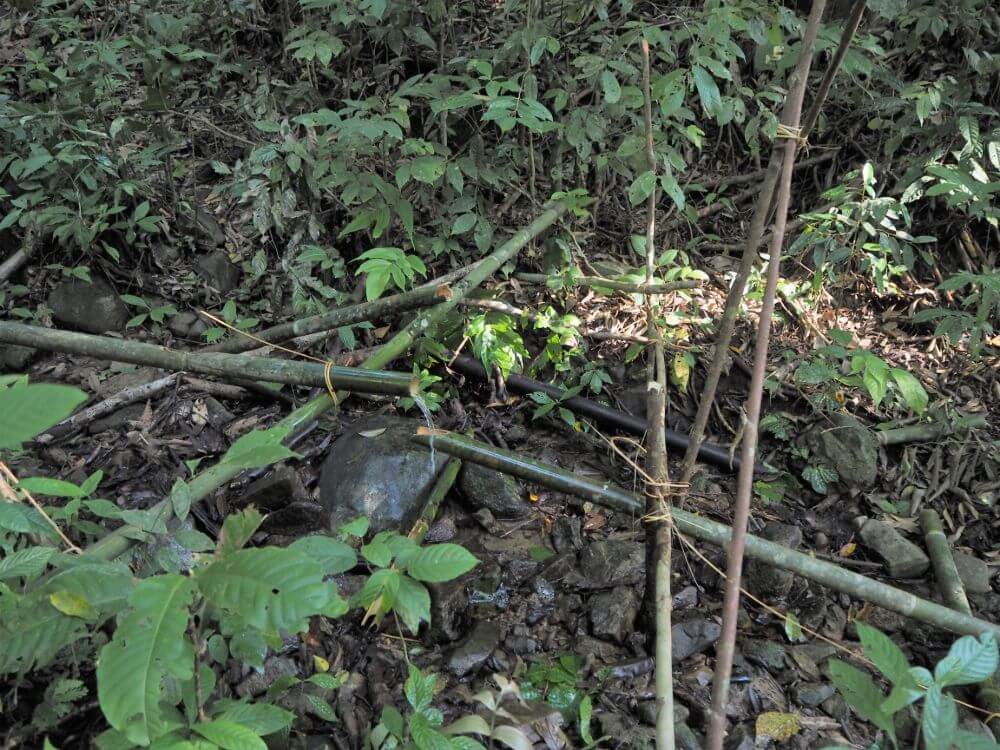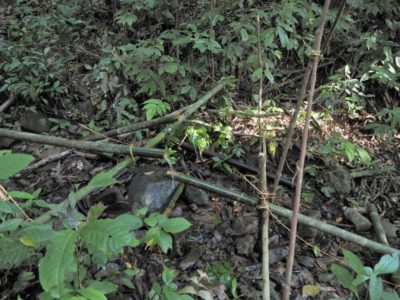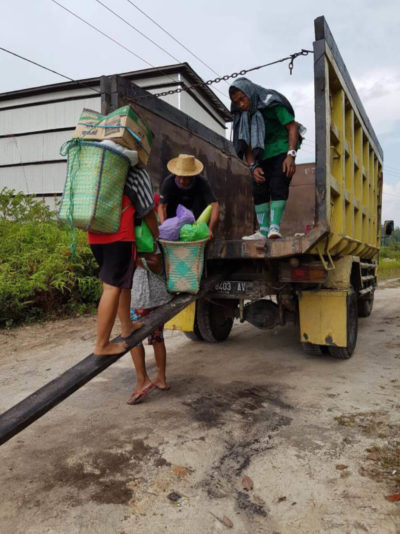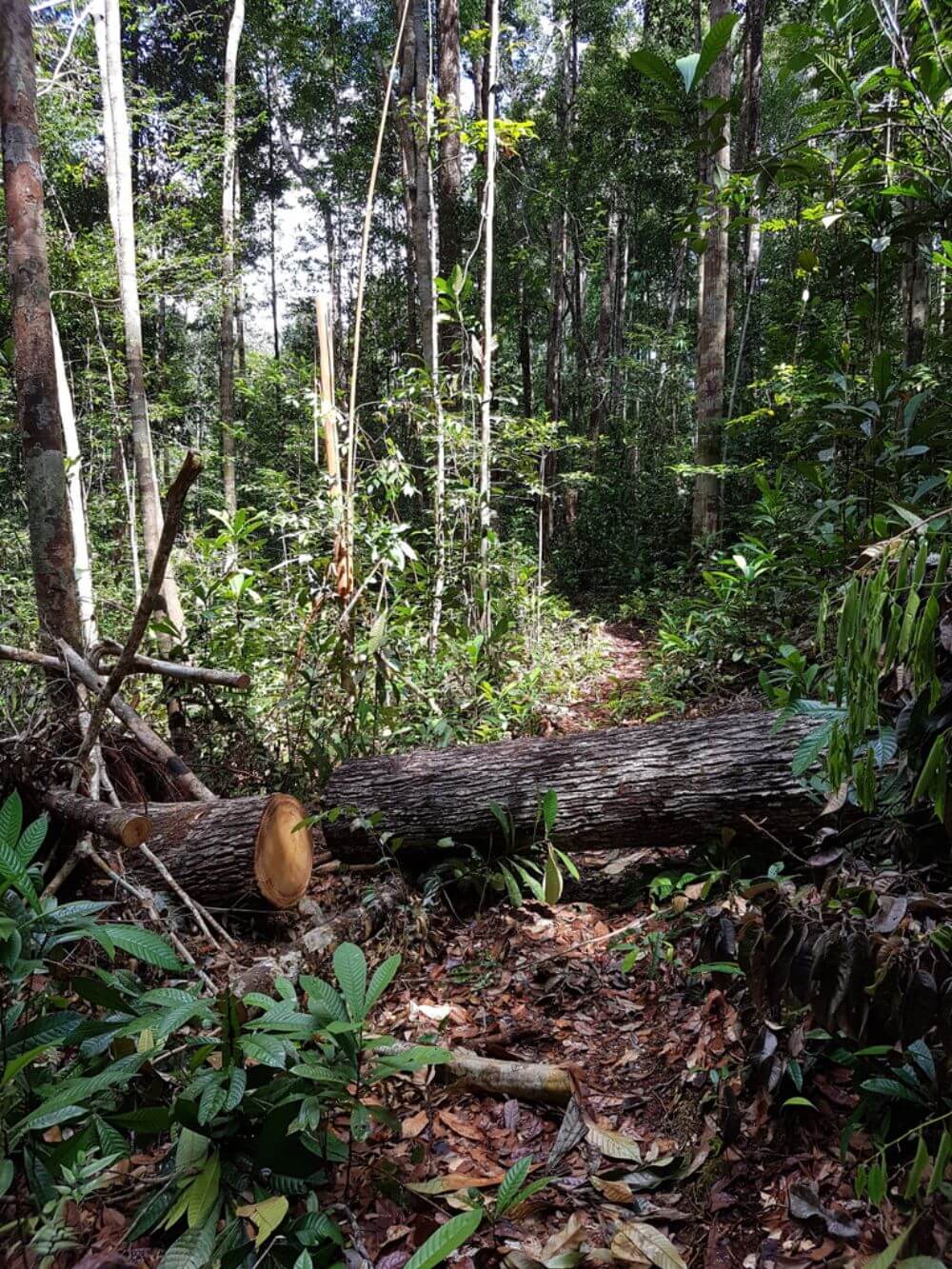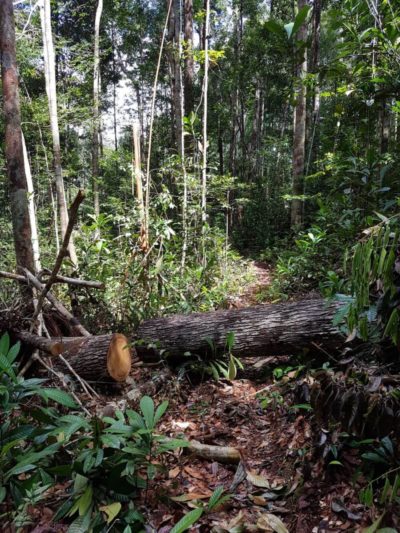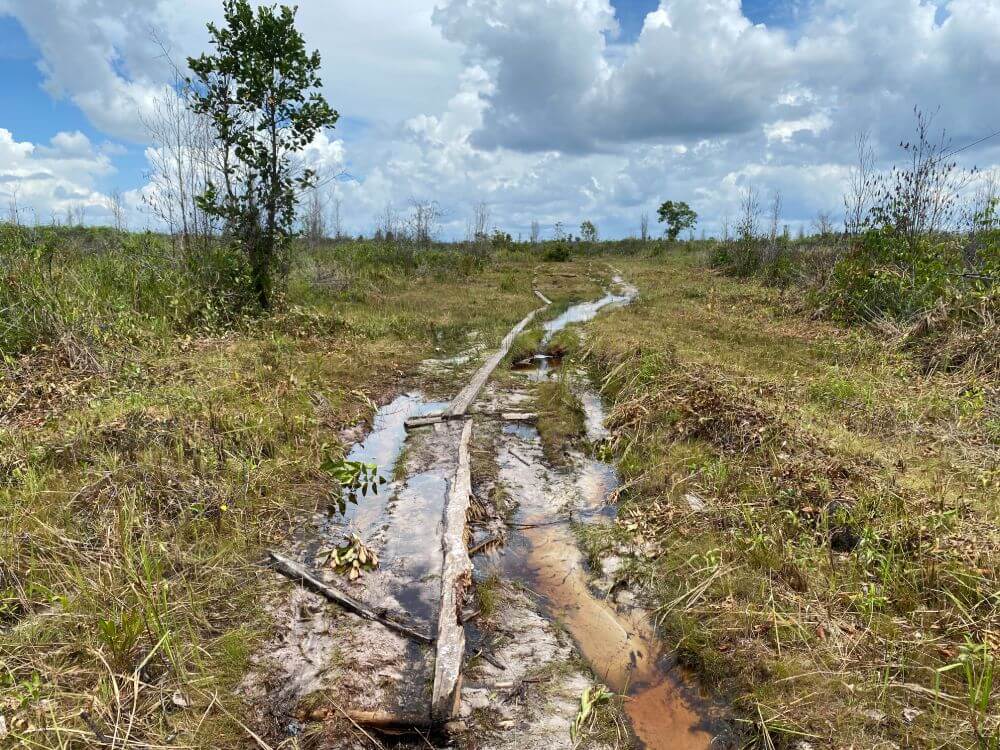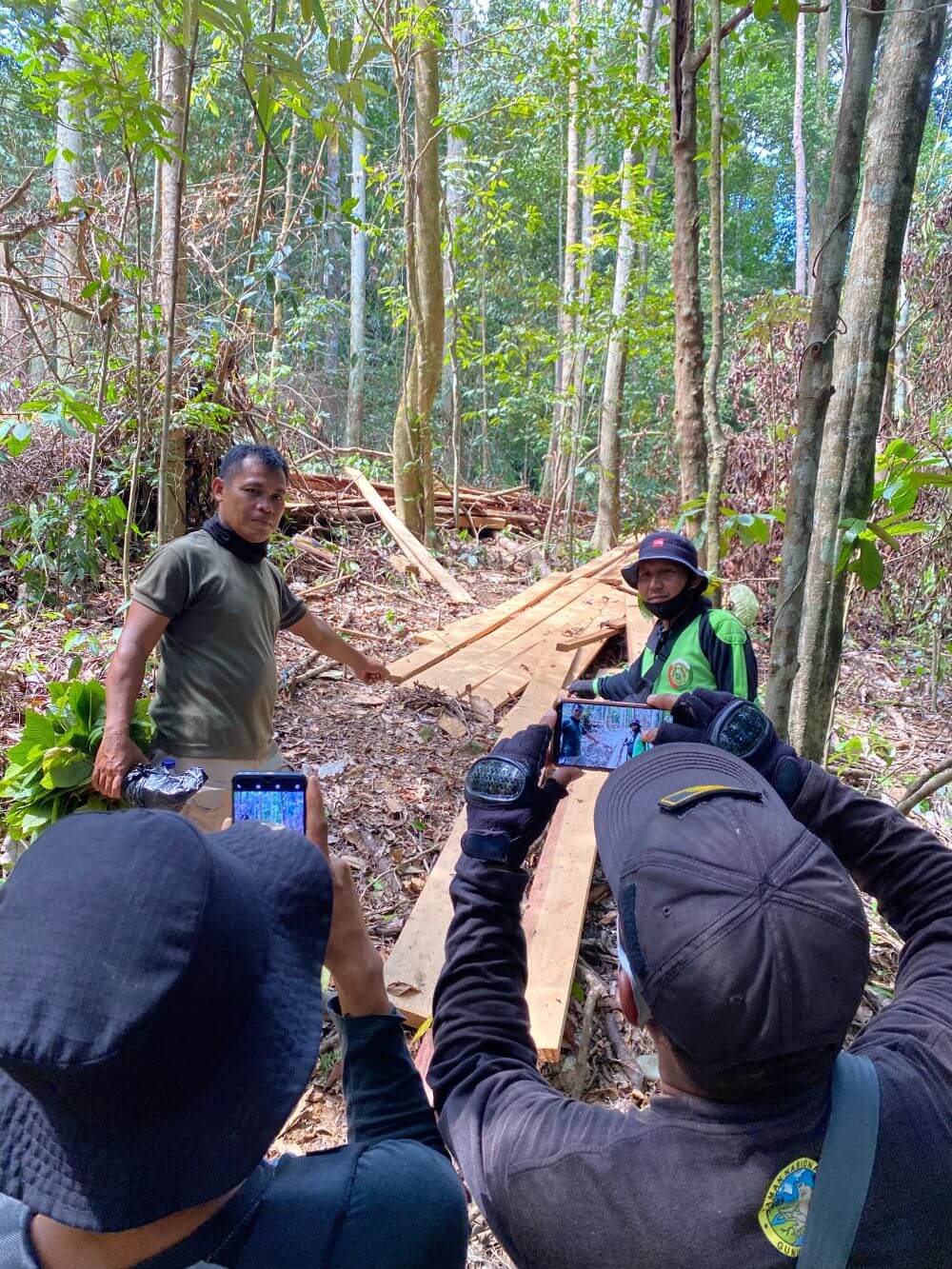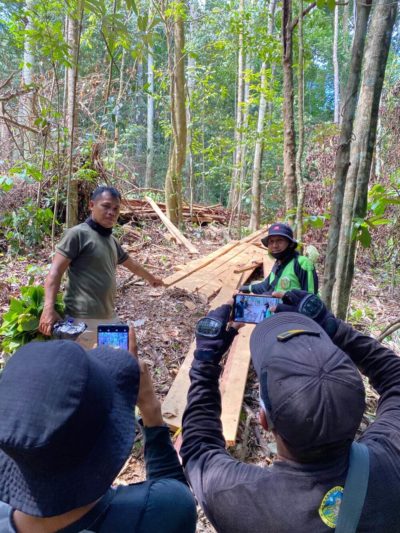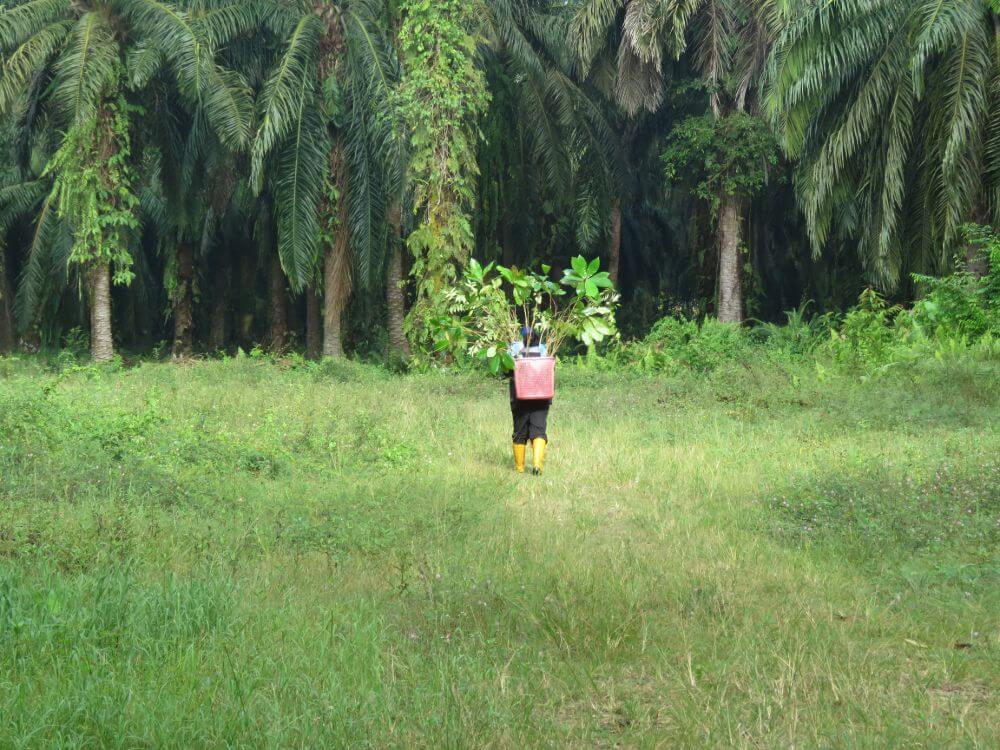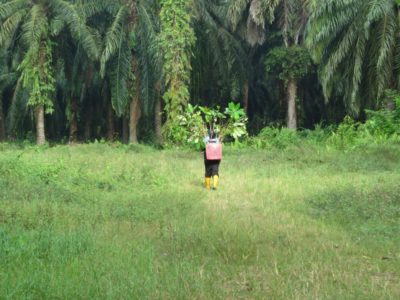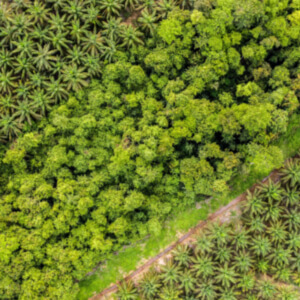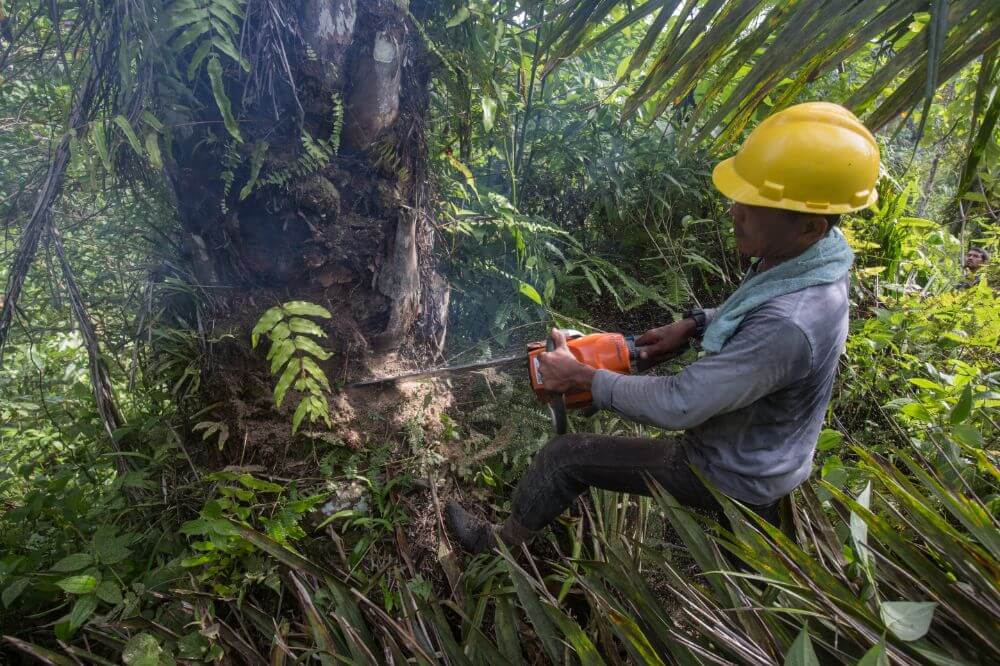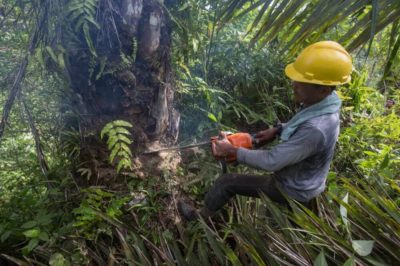A former logging railway transports a member of the Borneo Nature Foundation (BNF) through the thick smoke haze to reach the Sebangau forest in Central Kalimantan, Indonesia.
Indonesia’s peatlands, where most orangutans live, frequently experience devastating forest and land fires during El Niño induced droughts. In 2015, nearly 125,000 fire hotspots were detected in the peatlands of Sumatra, Borneo and the Indonesian part of Papua. The impacts of these recurrent peat-fires range from local to global scale. Large areas of forest burn down, which leads to biodiversity loss, release of huge amounts of greenhouse gas emissions to the atmosphere, and toxic smoke haze that causes respiratory diseases and premature death, and disrupts local as well as regional economies.
In the 1990s, this part of the Sebangau tropical peat-swamp forest was a timber concession. The 12km logging railway enabled the timber company to extract wood from this waterlogged forest. People also dug canals to extract logs during times of high-water table. The logging and construction of canals changed the hydrology of the peat-swamp forest drastically. Having lost its natural sponge effect, the peat-swamp forest gets now heavily flooded during the rainy season and becomes extremely vulnerable to fires during the dry-season. Today, Sebangau is the largest National Park in Kalimantan. It is home to the biggest continuous protected population of Bornean orangutans (with 6,000 individuals). The former logging camp has been converted into a permanent research facility. Nowadays, the logging railway carries field staff, conservationists, researchers and supplies, facilitating new forms of human and more-than-human collaboration.
Collaboration and Contestation

